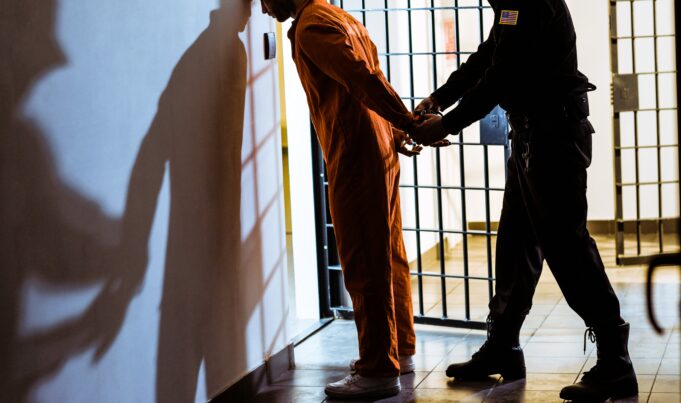WASHINGTON, D.C.—Davis Harrison knew something was wrong with his 20-year-old son, Roberto. He seemed to have arguments with invisible people when no one was around. When Mr. Harrison asked Roberto who he was talking to, his answers never made sense. The strange behavior increased. Roberto went from talking to the air to fighting the air to having emotional outbursts.
“I have no experience with mental illness, but I knew my son was suffering. However, I didn’t know what to do to help him. In hindsight, I was affected by shame and embarrassment to get the right help for him,” Mr. Harrison told The Final Call. “Sadly, I watched my son deteriorate to the point where his outbursts became violent and he attacked me.”
Mr. Harrison, like many families with few resources for mental illness, called the police. Roberto was arrested for assault.
Every year, more than two million people with serious mental illnesses are arrested. Mental health advocates are concerned about the over-policing of people with mental health disabilities as the United States faces an escalating mental health crisis.
“Approximately two million people with mental health disabilities will continue to be arrested yearly unless government undertakes longer-term change,” said Mia Ives-Rublee, director of the Disability Justice Initiative at the Center for American Progress and co-author of the issue brief “Long-Term Solutions to the Overincarceration of People With Mental Health Disabilities.”
“Policymakers at the federal and state levels must focus on long-term structural changes to reduce the negative interactions of people with mental health disabilities with police,” the brief states.
Their research highlighted that the U.S. Department of Justice’s 2011–2012 national inmate survey reported that one in seven people in state and federal prisons, and one in four in jails, showed signs of “serious psychological distress.” The same survey reported that more than one-third of incarcerated people had a clinical diagnosis of a mental health disorder, compared with one in five nonincarcerated people. Individuals with mental illnesses are also 16 times more likely to be killed by police.
The D.C. Metropolitan Police Department recently responded to a 911 caller who said a man was having a mental health crisis. A trained crisis intervention officer was among those who responded, according to Police Chief Pamela Smith. “For nearly two hours, they engaged in [a] crisis intervention conversation with him,” the chief said.
Eventually, the police were able to get 41-year-old Clifford Brooks into an ambulance for treatment with the crisis officer following behind in his cruiser. However, during the ambulance ride, the man became agitated and assaulted a woman paramedic alone with him inside the ambulance. Mr. Brooks was not in custody or handcuffed at the time. The paramedic fled the ambulance and Mr. Brooks followed her.
He ran through traffic, was found hiding under a truck and emerged holding a “metal object raised in his hand.” A police statement explained, “The officer directed the man to drop the metal object, but he refused and moved towards him with the object raised. The officer retreated backwards and again directed the man to drop the metal object.
The man charged towards the officer, grabbed at him, and swung the metal object at him. At that time, the officer discharged his firearm, striking the man.” Mr. Brooks was pronounced dead at the scene.
Researchers are also concerned about the rising rates of suicide among incarcerated people. Add to that concern the rise in serious substance-use disorders among the correctional populations. This population is more often Black, Latino, Native American and poor. The research shows these numbers will grow for these populations because they have a higher likelihood of arrest—often for minor infractions—and have longer stays in detention settings.
“That there is over-representation of people with these ‘behavioral health’ conditions (things like mental illness, substance-use disorders and even mixed with intellectual and developmental disabilities) in the criminal legal system is not news,” explains Dr. Debra A. Pinals of the Pew Research Center.
“But the COVID-19 pandemic brought new attention to the challenges of mental illness in a society with over 30 percent of the population reporting anxiety or depression, and ongoing alarming rates of suicide, overdose, and homelessness.”
The Center for American Progress recommends federal and state governments create long-term solutions with the following:
• Increase funding for wraparound services which provide case management, treatment, medication management, and other supports to enable people to continue living at home rather than in institutionalized care.
• Reduce administrative burdens and eliminate barriers to safety net programs that make it easier for people with mental health disabilities to obtain treatment and other services.
• Increase the availability of employment services such as individual placement and support, that help individuals with mental health disabilities obtain and maintain partial or full-time employment.













